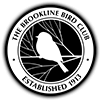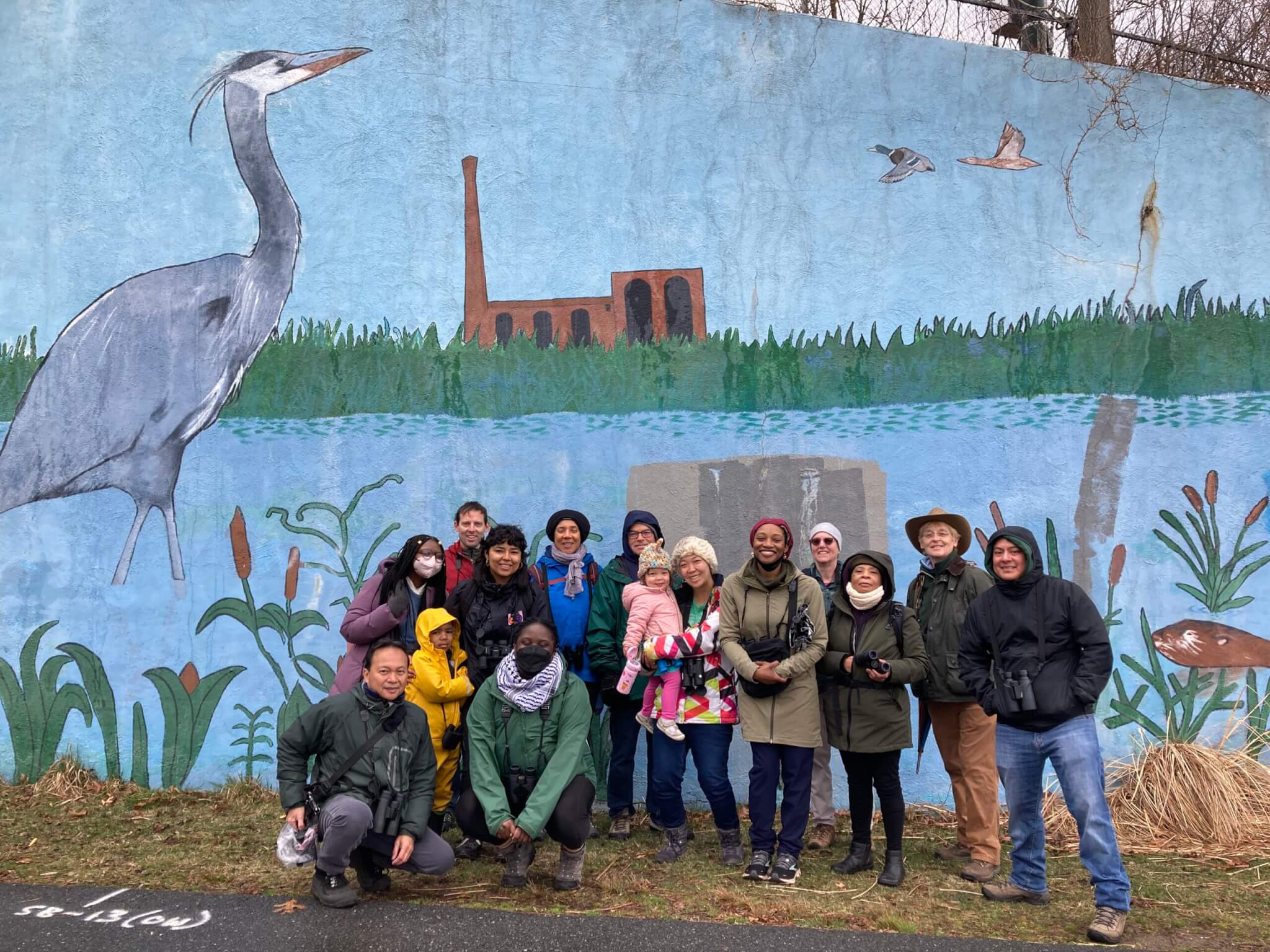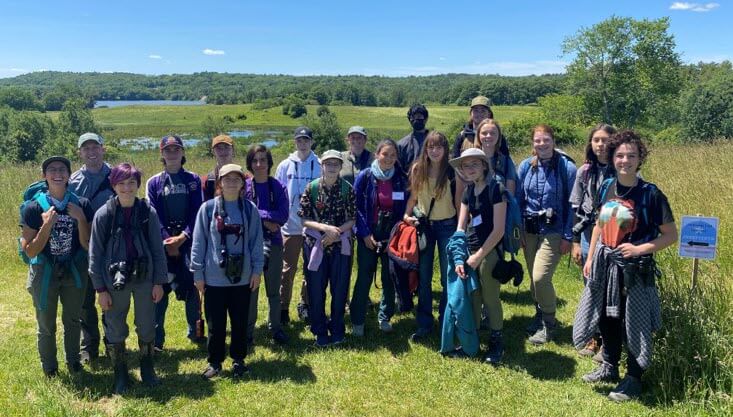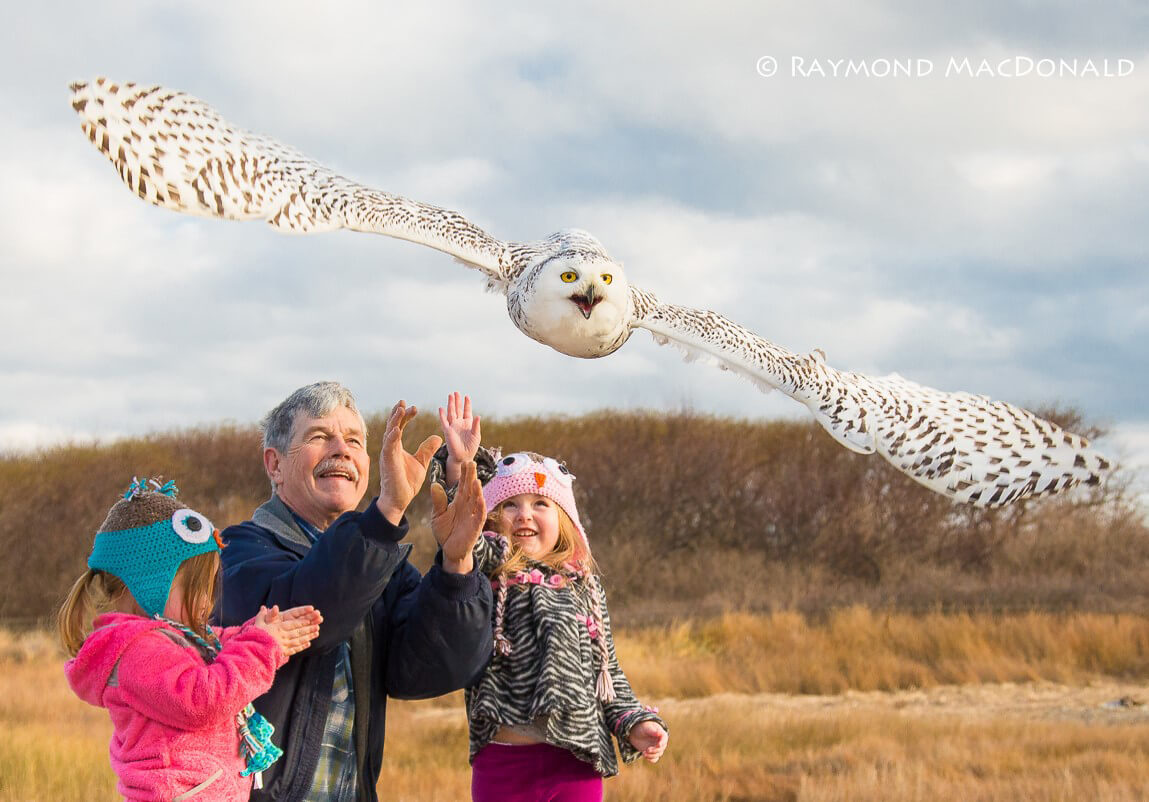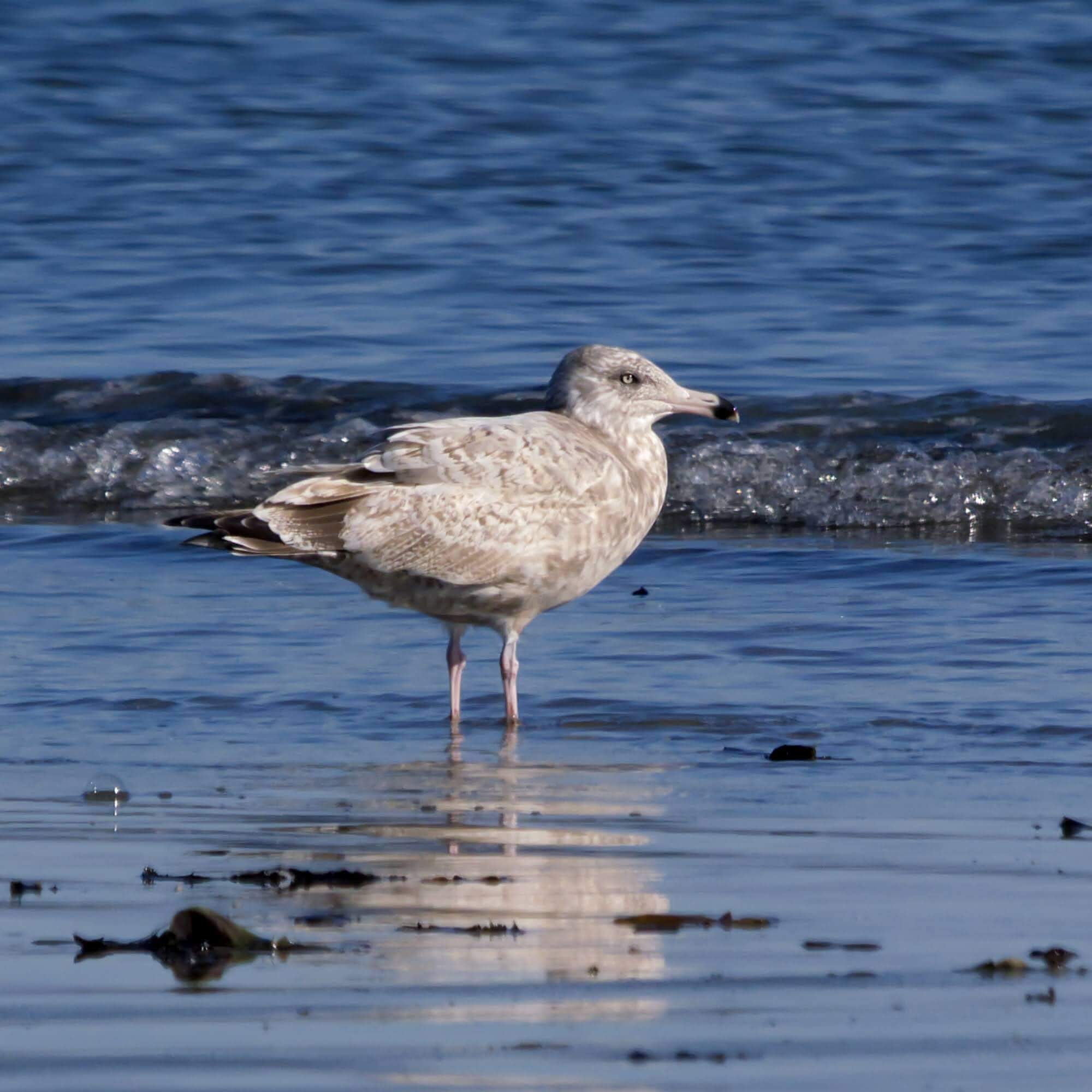About once a week, from November into March, the BBC offers field trips to Gloucester and/or Rockport on Cape Ann, one of the Northeast’s prime destinations for winter birding. The main attractions are seabirds: waterfowl, alcids, and gulls. On a given day, we usually find 15 to 20 species of ducks and geese, with a possibility of a stunning King Eider and the virtual certainty of Harlequin Duck, a risk-prone, fantastical beauty fond of rough water and one of only three torrent-feeding ducks in the world. Six alcids are possible, from the probable Razorbill and Black Guillemot to the very scarce Atlantic Puffin. But it’s gulls, especially rare ones, that focus many birders’ attention on Cape Ann. You’ll have an excellent chance to see an Iceland (at the southern end of its winter range) and a fair chance at the imposing Glaucous, while various other scarce to rare gulls have been found on BBC trips, including Black-headed, Slaty-backed, and Ivory. It takes great luck to find the rarer gulls, but we keep scoping, hoping, and searching.
One standard BBC route begins at the famed bronze statue of the Man at the Wheel, dedicated in 1923 as a memorial to those who have “gone down to the sea in ships.” Here you’re looking out at Gloucester’s outer harbor—a scene often painted by local artists like Homer Winslow and Fitzhenry Lane–with Ten Pound Island in the foreground, Dog Bar Breakwater further out, and the Boston skyline in the distance. It’s a good spot for the more common local ducks like Red-breasted Merganser, Bufflehead, Common Goldeneye, and, near Stage Fort Park, one or both scaup species.
Jodrey State Fish Pier, in Gloucester’s inner harbor, is gull headquarters. From the end of the pier, BBC groups carefully scan the whole area—water, pilings, warehouse rooftops—for Iceland and Glaucous Gulls (or a rarer gull), ducks, grebes, Common Loons, and uncommon alcids like Dovekie and Thick-billed Murre. We also scope the City Hall tower, where two Peregrine Falcons spend their winters. Across the water on Rocky Neck Avenue, we sometimes scope the inner harbor from a different angle or, by crossing the street, scan Ten Pound Island and the outer harbor from a fresh vantage point.
Niles Beach, at the entrance to Eastern Point, is a good place to look for Horned and Red-necked Grebes, all three scoters, Long-tailed Ducks, and distant Black Guillemots. The tip of Eastern Point—the lighthouse, Coast Guard station, and breakwater–offers another chance for the same birds, along with gulls, Gadwall, and Purple Sandpipers, which often feed at the rocky tip of the seawall. We always check Niles Pond, which is alternate gull headquarters, even when frozen over. The Slaty-backed found here in January 2008, along with Lesser Black-backs, were all identifiable in part because they were standing on ice, with leg color easily visible. Open water may draw ducks like Ring-necked, Ruddy, the occasional Redhead or Canvasback, or a wintering Great Blue Heron.
Bass Rocks, or the Back Shore of Gloucester, a long stretch of rocks with an open view of the Atlantic and the twin lights on Thacher Island, is another fine area for guillemots, scoters, goldeneyes, grebes, Common and Red-throated Loons, Great Cormorants drying out on offshore rocks, Purple Sandpipers on the rocky shore, and especially King Eider, sometimes found directly out from the Elks Club parking lot. Note: if you’re scoping for a black-backed King Eider, you’re more likely to confuse it with a Greater Black-backed gull than the locally abundant Common Eider. In recent years we’ve sometimes found King Eider around the north end of Good Harbor Beach, just up the coast. At the beach parking lot, we often check for Horned Larks, Snow Buntings, the occasional Lapland Longspur, and sparrows in the thickets.
Cape Ann’s most distinctive geological feature, a granite outcrop jutting into the Atlantic, is called the Rockport Headlands, a collective term for Halibut Point, Andrews Point, and Cathedral Ledge. This is usually the last stop on the BBC loop, though we may come early on mornings when offshore winds drive seabirds close to shore. It’s a prime spot for tremendous views of Harlequins, and the best place on the Cape to scope for alcids like Razorbills and murres along with plunging Northern Gannets, Black-legged Kittiwakes, loons—Pacific with great luck–grebes, various ducks, and Purple Sandpipers. On trips to the 70 acres of Halibut Point State Park, BBC groups check heathland and woodlots for uncommon/irruptive landbirds like Bohemian Waxwing, Yellow-breasted Chat, Northern Shrike, and vagrant flycatchers.
On all-day winter trips, BBC groups might also visit the Rockport coves, like Folly and Loblolly, or the stretch from Plum Cove to Hodgkins Cove in Gloucester, the best place in recent years to try for Barrow’s Goldeneye. In other seasons BBC trips explore Eastern Point for spring migrants and visit Coolidge Point in Manchester for the evening spectacle of egrets, herons, and ibises returning to their roosts on Kettle Island.
Cape Ann is a place of great natural beauty. Here ocean meets rock, shaping coves, inlets, promontories, and crenulations, along with ledges and rocky islands and a wealth of birds that breed and feed in these places. The Cape also has a fascinating cultural history. At Cathedral Ledge you’ll stand where Ralph Waldo Emerson once stood, by the veranda of the Emerson Inn, and look out toward the Dry Salvages, the treacherous rocks described by T. S. Eliot in The Four Quarters. Emerson and Eliot spent their summers here, but missed out on the pleasures of Cape Ann winter birding: the birds, the crisp air, the plucky camaraderie of BBC groups braving cold or wind to find seabirds. Foul weather, local birders say, often brings great fowl. Bundle up.
text by John Nelson
King eider photo by Dave Williams
Other photos used with permission by Christopher N. Ciccone
Christopher Ciccone Nature Photography
www.cicconephoto.com
News Categories
Upcoming Field Trips
-
-
Belle Isle Marsh Reservation
East Boston - Belle Isle Parking Lot 1399 Bennington Street, Boston, MA, United StatesLet's explore the East Boston side of Belle Isle Marsh in winter! We'll look for ducks, hawks, Bald Eagles, winter finches and many more birds! Belle Isle is a fantastic birding destination in any season. All of the trails are flat and easy, with a slight elevation on the small hill going through the meadow. [...]
-
Midweek Hunt for Alcids and Seabirds
Rockport - Halibut Point State Park Halibut Point State Park, Rockport, MA, United StatesJoin us for a mid-week hunt for alcids and other wintering seabirds. Be prepared for cold and windy weather. If bad weather is predicted, contact the leader by 6:00 pm the previous evening.
-
Millennium Park
Boston - Millennium Park Canoe Launch 300 Gardner Street, Boston, MA, United StatesJoin us to look for birds in a unique urban habitat that often draws numerous uncommon and rare birds. Birders of all levels will enjoy this trip. The trails are flat and easy to walk. We may offer optional 30-60 minute trip extensions to adjacent locations such as West Roxbury High School Marsh and/or Brook [...]
-
Sconticut Neck and West Island, Fairhaven
Fairhaven - Sconticut Neck and West Island 209 Huttleston Ave,, Fairhaven, MA, United StatesWe will make several stops on the neck and then onto West Island to search for winter ducks, loons, grebes and shorebirds.
-
Belle Isle Marsh and Vicinity
East Boston - Belle Isle Parking Lot 1399 Bennington Street, Boston, MA, United StatesLed by DCR staff. We will search on foot up to one mile, on flat, easy terrain for snowy owls and other raptors, native sparrows, finches, waterfowl, and other birds. This is a traveling program by car or bike. Prepare for ticks. Ages: Adults and kids 8 years+ with adult chaperone. Binoculars recommended. ADA/Reasonable Accommodations [...]
